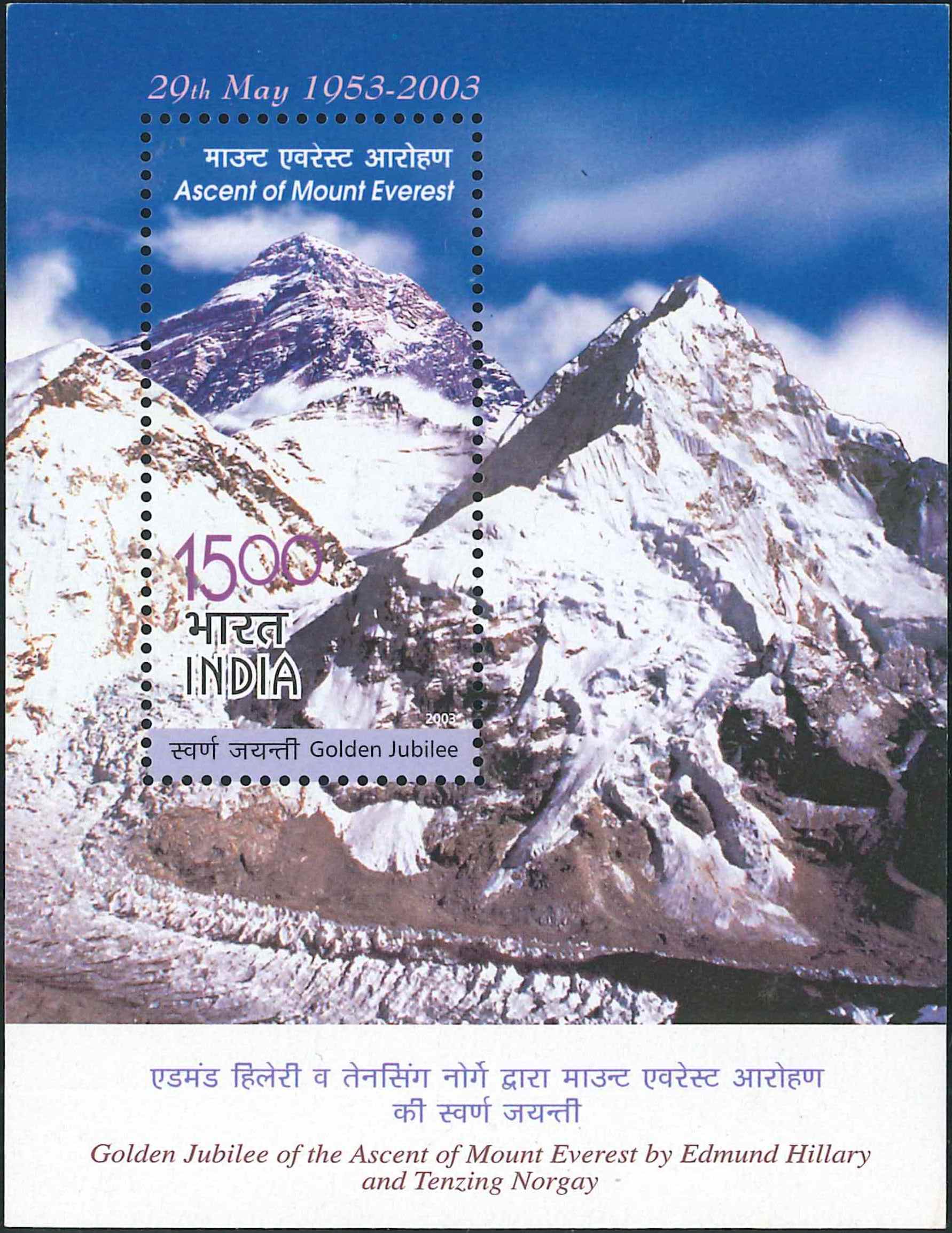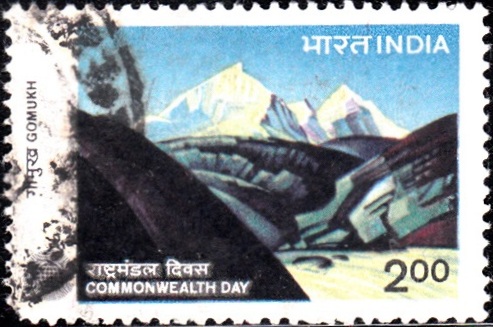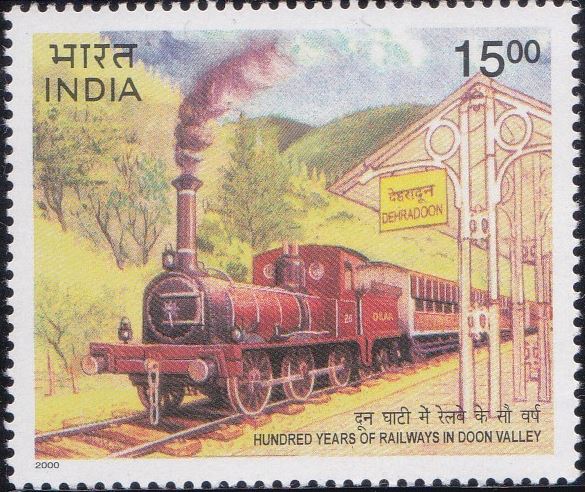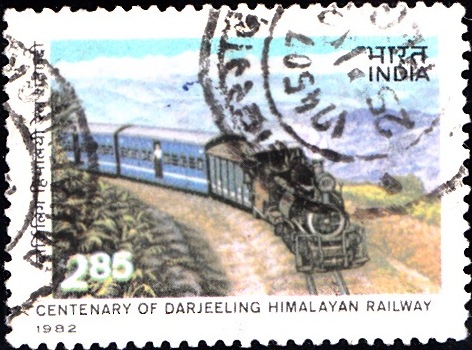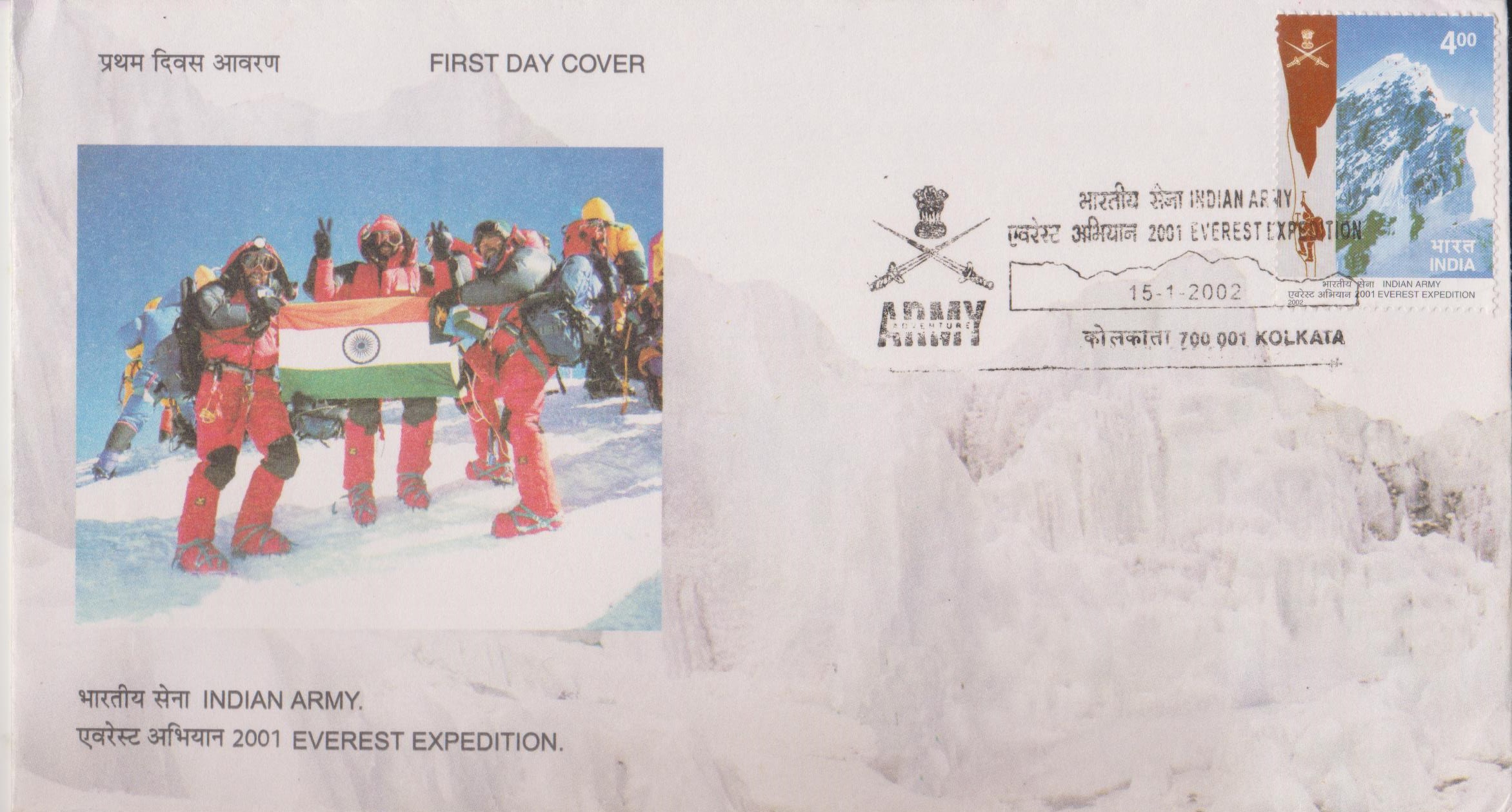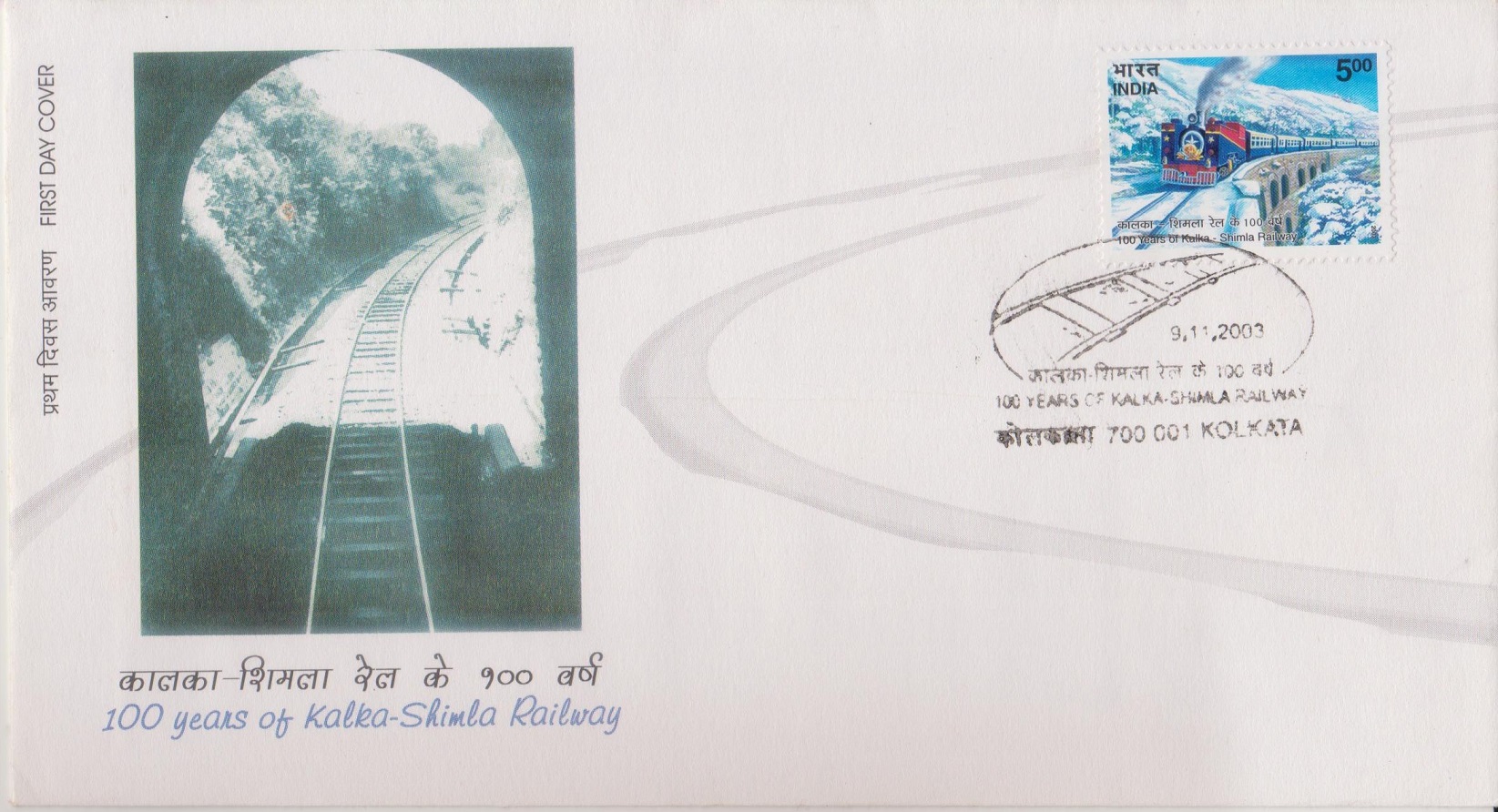
Kalka-Shimla Railway
A commemorative postage stamp on the 100 Years of Kalka–Simla Railway, an UNESCO mountain railways of India World Heritage Site :

 Issued by India
Issued by India
Issued on Nov 9, 2003
Issued for : The Department of Posts commemorates 100 years of the Kalka–Shimla Railway.
Credits :
Stamp & FDC : Designed by Kamleshwar Singh, based on material provided by proponents & from “Kalka Shimla Railway” by R.R. Bhandari, Secretary, Railway Board.
Cancellation : Alka Sharma
Type : Stamp, Postal Used
Colour : Four Colour
Denomination : 500 Paise
Overall size : 2.9 x 3.91 cms.
Printing size : 2.9 x 3.91 cms.
Perforation : 13 x 13
Paper : Imported unwatermark stamp paper
Print Quantity : 3 Million
Number of Stamps per sheet : 50
Printing Process : Photo Offset
Printer : Eagle Press Pvt. Ltd.
About :
- 1816 saw the tract of land on which Shimla stands today, transferred to the East India Company under the Nepalese Peace Treaty, in return for the security provided by the Company to Sikkim. The British were quick to realise the potential of the environs as an alternative England in India. The bumpy 43-mile ride on ponies or in jampans (sedan-chairs) was, however, a discomfort to the Governors General who braved the track. Nonetheless, the idea of a railway line, came from a plea in the Delhi Gazette of November, 1847 to make this “the permanent seat of a Government, daily invigorated by a temperature adapted to refresh a European constitution, & keep the mental power in a state of health, beneficial both to rulers & the ruled”.
- The railway surveys of 1884-95 were followed by the signing of a contract in 1898 between the Secretary of State & the Delhi–Umbala Railway Company. On 9th November, 1903, a 96 km railway line was launched in the limestone & shale rocks of the Shivalik Hills after three years of dedicated labour. Laid on sharp curves, the line passes over 864 bridges and through 102 tunnels using a narrow gauge of 2’6” in deference to hill formation and gradient.
- The journey from Kalka to Shimla is absolutely out of this world. The toy train provides a breath-taking view of the Kushalya river, the moment it enters the foothills. The serpentine splash of mercury keeps disappearing and reappearing with each bend for some time. Passage through the Koti tunnel makes you hunt for a coat and the air jabs you the moment you hit Jabli, 1240m above sea-level.
- Three picturesque loops near Taksal, Gumman and Dharampur provide photo-opportunity to an enthusiast. The ascent is steady. The train winds its way across green meadows, capsicum fields, re-roofed chalets and half-timbered houses. Each coach has chuckle under its wheels. About seven coaches form a train, to accommodate about 200 passengers per trip. The extremities of weather do not dislodge the determination of the 700 horse power B-B type diesel engines. They run to the call of duty in temperatures ranging from 0-45 Celsius and in snow which averages 2 feet during winters, and an annual rainfall of 200-250 cm. The average speed of 25-30 kmph ensures that “hurry” is replaced by a naturalness of demeanour.
- To taste the beauty of nature in exclusivity, travel in the Rail Motor Car which houses only 18. They are four and of them, three date to 1927, while the last dates to 1930. The original White & Pope petrol engines fitted by Drewry Car Company Ltd., London, were replaced during the Second World War as petrol was scarce. Americans supplied the diesel engines to the car, from General Motors, U.S.A.
- Nature unrolls its bounty as you travel. Gurgling brooks flowing down mountains, passing under the stone bridges; greenery & fragrances that live beyond photographs; clouds of mist gingerly touching you. The train meanders through Kumarchatti, then enters the Barog tunnel (1144 metres long) which crosses the Panchmunda ridge about 900 feet below the road. At Barog, it is mealtime on the morning trip. Though the English firm of “Spencers” which built the restaurant at Barog is no longer there, the hospitality continues to live.
- From Barog to Kandaghat the train runs downhill, past beautiful and quaint retreats of Solan and Saloghra. The final climb begins at Kandaghat. Gradually, solemn forests of deodars and pines replace the meadows. At Shogi, a heart-warming view of the Chail Valley brings numerous anecdotes associated with a Prince from Punjab. Banished from England society at Shimla, he built for himself a palace at Chail, a nearby resort.
- Past Taradevi, the railway takes you under Prospect Hill to Jutogh, winding its way like a naughty current of air teasing you, till it pauses at Summer Hill. Finally, under the Inverarm Hill, you emerge like a happy child at Shimla.
- Text : Sandeep Silas, Director (Information & Publicity), Railway Board.


